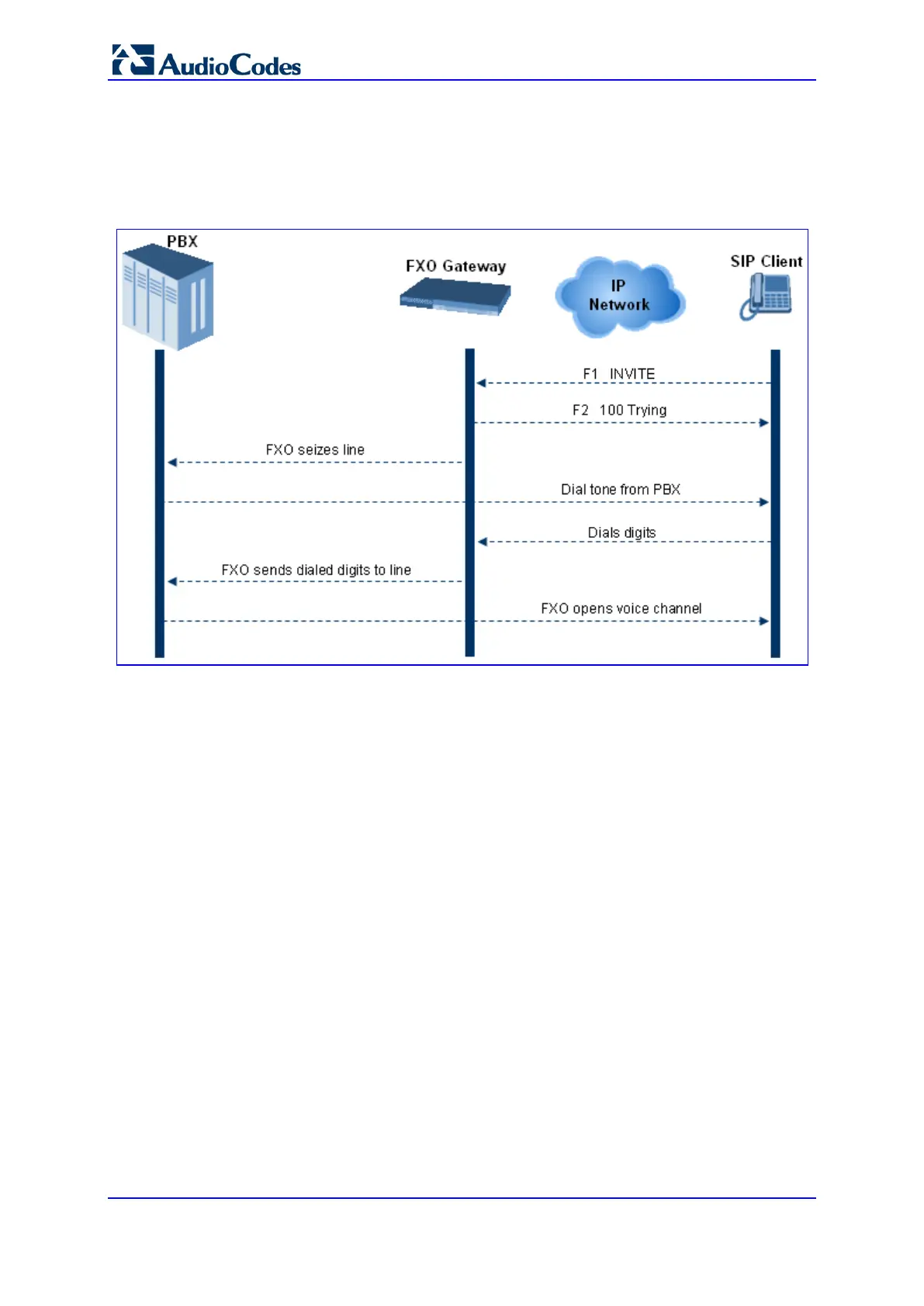SIP User's Manual 334 Document #: LTRT-83310
Mediant 600 & Mediant 1000
18.6.13.1.2 Two-Stage Dialing
Two-stage dialing is when the IP caller is required to dial twice. The caller initially dials to
the FXO device and only after receiving a dial tone from the PBX (via the FXO device),
dials the destination telephone number.
Figure 18-26: Call Flow for Two-Stage Dialing
Two-stage dialing implements the Dialing Time feature. Dialing Time allows you to define
the time that each digit can be separately dialed. By default, the overall dialing time per
digit is 200 msec. The longer the telephone number, the greater the dialing time.
The relevant parameters for configuring Dialing Time include the following:
DTMFDigitLength (100 msec): time for generating DTMF tones to the PSTN (PBX)
side
DTMFInterDigitInterval (100 msec): time between generated DTMF digits to PSTN
(PBX) side
18.6.13.1.3 DID Wink
The device's FXO ports support Direct Inward Dialing (DID). DID is a service offered by
telephone companies that enables callers to dial directly to an extension on a PBX without
the assistance of an operator or automated call attendant. This service makes use of DID
trunks, which forward only the last three to five digits of a phone number to the PBX. If, for
example, a company has a PBX with extensions 555-1000 to 555-1999, and a caller dials
555-1234, the local central office (CO) would forward, for example, only 234 to the PBX.
The PBX would then ring extension 234.
DID wink enables the originating end to seize the line by going off-hook. It waits for
acknowledgement from the other end before sending digits. This serves as an integrity
check that identifies a malfunctioning trunk and allows the network to send a re-order tone
to the calling party.
The "start dial" signal is a wink from the PBX to the FXO device. The FXO then sends the
last four to five DTMF digits of the called number. The PBX uses these digits to complete
the routing directly to an internal station (telephone or equivalent)

